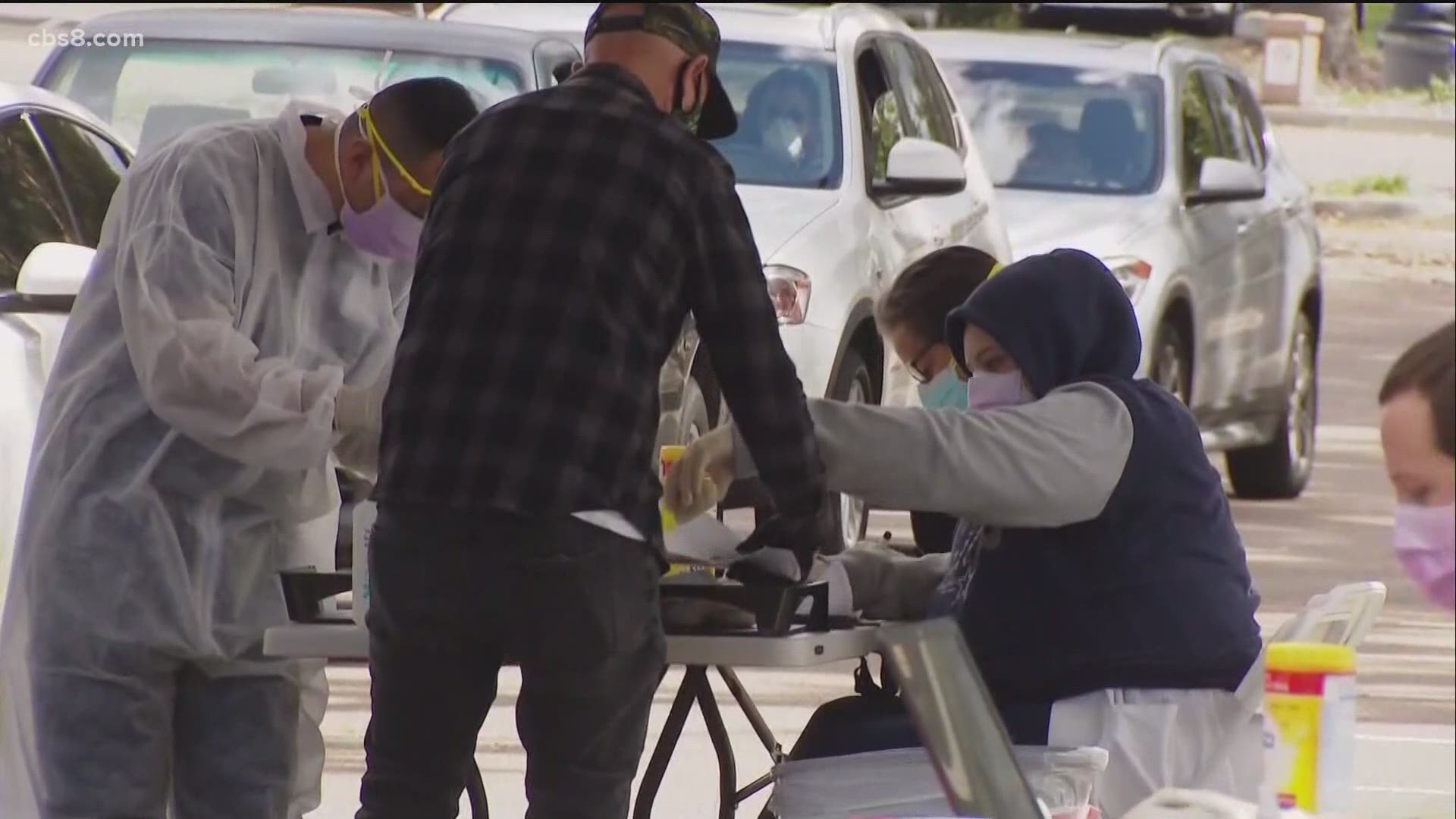SAN DIEGO COUNTY, Calif. — San Diego County health officials predict the county will end up on the state’s “watch list” by the end of the week amid a spike in coronavirus cases. Additional measures would be imposed on the county by the state if it continues through July 6.
“We thought we had peaked at end of April, April 20 through May 8, but with reopening the various industries and venues, we now see an increased number of cases,” said Wilma Wooten, MD, MPH, the county’s public health officer.
An increase was not completely unexpected as more businesses reopened around Memorial Day. However, the recent spike in cases and the percentage of positive cases relative to the number of tests performed has spiked over the past two weeks.
Four indicators look at the number of cases and their impact: percentage positive, hospitalizations, admissions to Intensive Care Units and deaths.
The first warning came in the number of positive tests. On June 16, the county reported 1.8% positive cases. By June 28 the percentage grew to 7.2%.
The increase came as the county continued performing more tests, which is why percentage positive alone is not an indicator of an issue.
Hospitalizations from coronavirus can, generally, indicate a person is suffering worsening symptoms.
On Monday, 493 hospital beds were occupied by coronavirus patients, up from 343 two weeks earlier. Since hospitalizations lag positive tests, the number is expected to increase over the next few days.
ICU admissions lag even further behind. On Monday, there were 182 patients with coronavirus in the ICU, the most at any time since at least May 7.
The county’s mortality rate from coronavirus has remained either flat or decreased over the past 14 days. Health officials said this is partially due to a demographic change in patients. The median age of those testing positive has dropped to 40 years old, as of June 30. Six weeks ago, the median age was 46. While the median age of those who died from the virus remains at 78.
Health officials said younger people, particularly those between 20 and 40 are engaging in riskier behavior and represent the largest group of positive cases.
“We’re very, very concerned about the trajectory of this pandemic,” said Patty Maysent, Chief Executive Officer of UC San Diego Health. “[All of the region’s hospitals] are all seeing these increases in in-patients, increased demand of critical care and more patients turning positive and more healthcare workers turning positive.”
See below for recent commonly asked COVID-19 questions and their answers:
What is the state watch list?
California has compiled a list of counties that are struggling to contain coronavirus. The state can then impose additional restrictions once a county has been on the list for three or more days.
What counties are on the watch list?
Contra Costa, Fresno, Glenn, Imperial, Kern, Kings, Los Angeles, Merced, Orange, Riverside, Sacramento, San Bernardino, San Joaquin, Santa Barbara, Solano, Stanislaus, Tulare, Santa Clara and Ventura are on the list. They represent about 70% of the state’s population.
San Diego is the only Southern California that was not on the list.
Why could San Diego end up on the list?
Counties are required to keep their case rate below a ratio of 100 positives for every 100,000 people. On June 30, San Diego hit a rate of 105 for every 100,000 residents and was flagged by the state. If the cases remain at or above the current rate, as expected by Wooten, for three days then San Diego goes on the watch list.
What happens then?
If San Diego remains on the watch list through July 5, then on July 6, the state can impose more restrictive measures for three weeks, at which point the cases are reassessed on July 27.
What restrictions could be coming?
On Wednesday, Gov. Newsom suspended indoor dining, entertainment venues (such as movie theaters, bowling alleys and arcades), indoor wineries and bars. Restaurants were permitted to remain open for pick-up, delivery or outdoor dining.
San Diego already ordered bars and some indoor establishments to close after other Southern California counties were forced to do the same.
Why aren’t beaches or outdoor venues forced to closed?
The Health and Human Services Agency says its tracers have linked all outbreaks to indoor facilities, including events inside people’s homes. No outbreaks have been linked to outdoor activities, such as the beach or recent protests.
How are people getting infected?
UC San Diego Health said in most cases transmission is occurring when people around them are asymptomatic and not physically distancing, which is why it remains imperative to wear a face covering and practice good hygiene.

